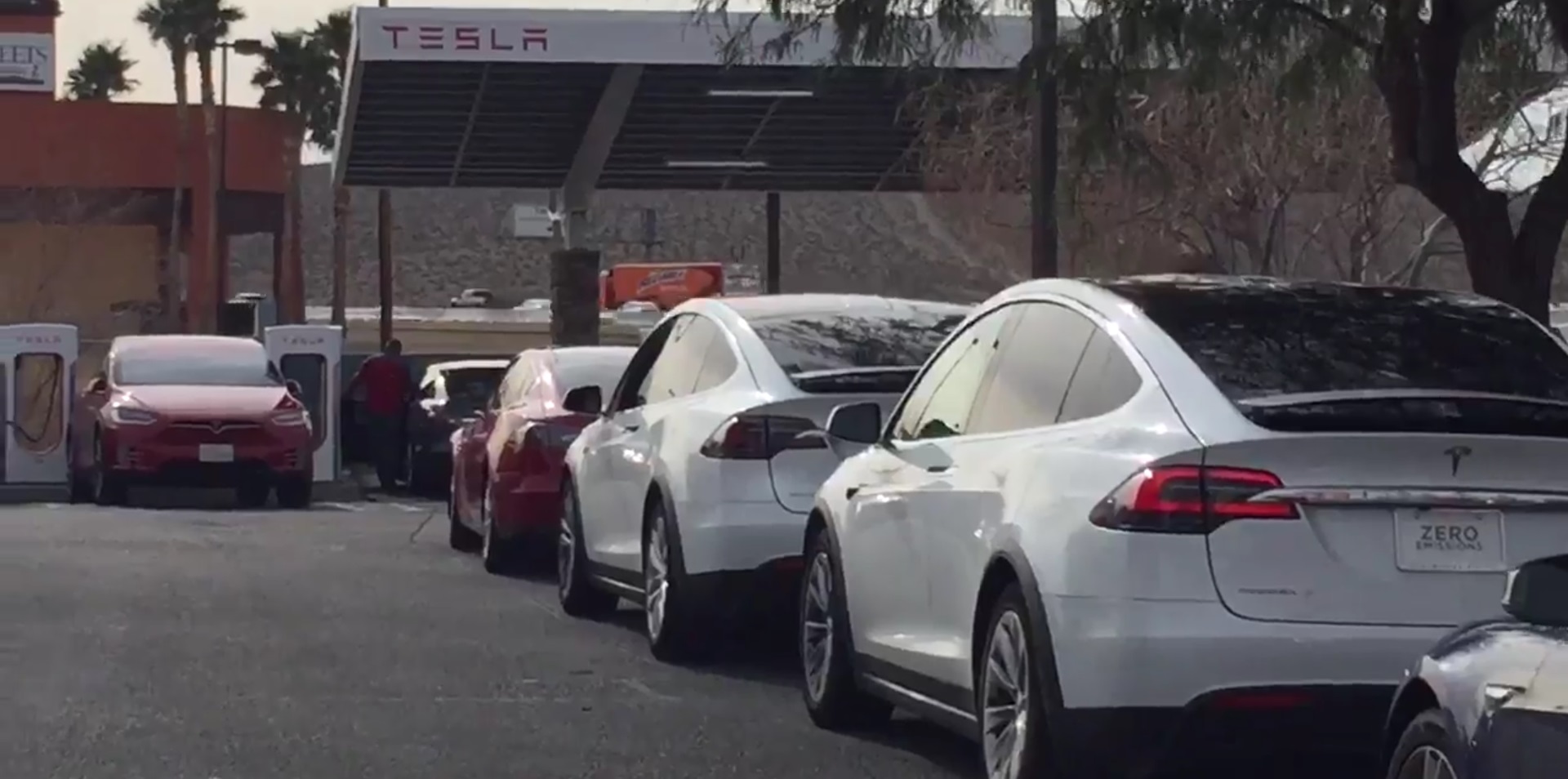The Chicken and Egg Problems of EV Charging

The Federal government, in its interest in reducing tailpipe emissions of greenhouse gases, has set aside $5 Billion in grants to help states and businesses erect fast charging stations every 50 miles along “major highways”. This move recognizes that long-distance driving in EVs is met with some skepticism by potential EV adopters: “If I can’t charge with some regularity, how do I take a trip to see grandma who lives in central Kansas?” Buyers who want to have an EV that meets all their needs intuitively recognize that buying an expensive battery to have 500 mile range isn’t a great answer. It is very expensive for one thing, and it isn’t used very often for another.
It is something of a mystery why this is a problem, but facts are facts. To see the factual reality, 10 years ago we did this story on driving across the country vertically in a Tesla; adventure, yes, but not the optimal road trip for most. Recently, The Wall Street Journal did a kind of repeat of our drive, and they had less fun because they were in a hurry. Much less fun.
Okay, things are not great, but that doesn’t explain why they are so bad. We have more questions than answers, but we think the fact that the questions seem addressable means this landscape will change quickly:
- Commentators have generally said that the chicken and egg problem is that there aren’t enough EVs to make infrastructure investment work. In 2022, EV sales should hit about 7% of total unit sales. This will soon be 10%. At that rate of growth, by 2025, EVs will be about 10% of total units on the road. Our guess is that this is an inflection point.
- There are 145,000 gas stations in the US. There are about 5000 fast charging locations in the US. Some simple reasoning suggests that if EVs are 10% of vehicles, and charging stations grew to 10% of “fueling locations”, then each EV refueling location would do the same volume as each gas station. That would seem to be a tipping point for attracting capital and for consumer convenience if the capital elected good locations.
- Gas stations make about 10% margin on fuel sales. That means if gas is $4.00 per gallon, then the filling station makes $0.40 per gallon. At 25 mpg, a 10 gallon refill that gives 250 mile range costs the consumer $40.00 and the station gets $4.00 in margin. A 50 kwh recharge, which gives about 250 miles range, costs the EV charging station about $5.00 at $0.10 per kwh. Thus, the station could charge $9 for the 50 kwh charge and make the same money as on the 10 gallon refill. So far so good.
- One could reasonably be skeptical that gas station owners are capitalized at a level that would allow the installation of EV charging. But there are other large capital sources (e.g. oil companies, private equity). In the analysis above, note that there is still about $31 in margin on the table before EV recharging has equivalent costs to refueling. Translated that’s a $40 recharge, with $9 going to the charging station and $31 to the capital provider. Even if $4 goes to the state in taxes, that’s $27 in margin. That seems more profitable than gasoline, though the economics of oil from well to wheel are complex. We would opine that businesses that are big and have 67% margins tend to get funded.
- We also note that if our 2025 tipping point is right, then the capital providers would have to get going now. Since gasoline is the US is a $500 billion retail business, if EV recharging is a highly profitable $50 billion business, then it will get funded. Of course lots of charging happens at home right now, so maybe this is a $10 billion business, with very high margins growing rapidly.
- The Federal funding of $5 billion seems material. So, our interpretation about the angst reported in The Wall Street Journal about the rules around the money is really “we know this is a good business with good subsidies, we just want to tweak the rules a bit to raise the return on investment.”
Our prediction is that things will change fast. Our only hesitation is that so many early adopters (e.g. Chargepoint) do such a terrible job managing their infrastructure (regular experiences of broken chargers). But maybe the next round of capital will actually build real businesses.


















